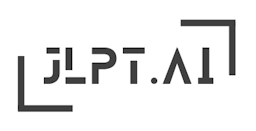

N2
音読み:kai, ge
訓読み:toku, tokasu, tokeru, hodoku
カイkai
ゲge
と.くtoku
と.かすtokasu
と.けるtokeru
ほど.くhodoku
To solve, to untie, to explain
Imagine a complicated puzzle that needs to be solved. Each piece fits together, slowly unraveling and explaining the solution.
The kanji '解' is a key component in JLPT N2 level materials, appearing frequently in both kanji and reading comprehension sections. Its versatile meanings and usage make it necessary to study for the exam.
問題を解く
To solve a problem
もんだいをとく
mondai o toku
謎を解明する
To unravel a mystery
なぞをかいめいする
nazo o kaimei suru
説明を求める
To seek an explanation
せつめいをもとめる
setsumei o motomeru